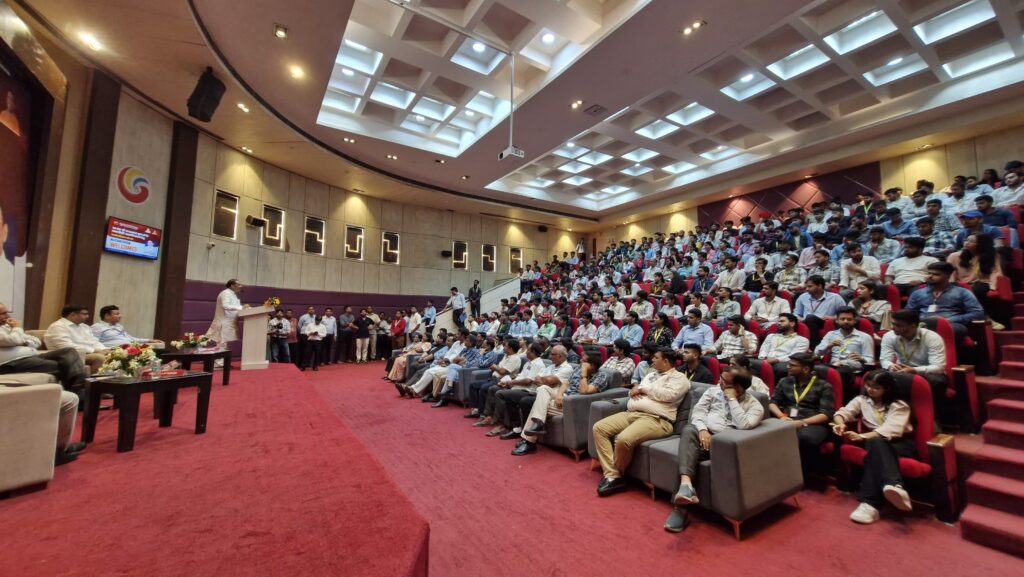Vaibhav Srivastava*
Nestled in the heart of the historic city of Lucknow, amidst the grandeur of the Bara Imambara, lies an architectural marvel that has intrigued and fascinated visitors for centuries. Known as Bhool Bhulaiya, this maze-like structure is a testament to the architectural brilliance of the bygone era and continues to be a symbol of mystery and intrigue. In this article, we will take a journey into the depths of Bhool Bhulaiya, exploring its history, design, and the enchanting stories that surround it.
Bhool Bhulaiya is an integral part of the Bara Imambara complex, which was built during the reign of Nawab Asaf-ud-Daula in the late 18th century. The main purpose behind the construction of this colossal complex was to provide employment to the impoverished populace of Lucknow during a severe famine. The project, however, turned into a magnificent architectural feat that stands as a testimony to the skill and vision of the architects and artisans involved.

The most captivating aspect of Bhool Bhulaiya is its labyrinthine design. The structure is essentially a dense network of corridors, staircases, and 489 identical doorways, some of which lead to dead ends, while others open into expansive halls and chambers. The genius of the design lies in its ability to confuse and bewilder anyone attempting to navigate its passages. One could easily get lost within its intricate maze, hence the name Bhool Bhulaiya, which translates to “the labyrinth of illusions.”
The central hall of the Bhool Bhulaiya, known as the central chamber, is a grand architectural marvel in itself. It boasts an impressive arched ceiling with no supporting beams, which is a testament to the architectural prowess of the time. The acoustics of the central chamber are also remarkable, as even the faintest whisper can be heard clearly throughout the hall.
Bhool Bhulaiya is not just a maze of corridors and chambers; it is also shrouded in legends and mysteries. One of the most popular stories surrounding the complex is that it is haunted by the spirit of a dancer named Mariam. According to folklore, Mariam fell in love with the Nawab’s son but was forbidden to marry him. Heartbroken, she wandered the labyrinthine passages of Bhool Bhulaiya until her death. It is said that her restless spirit still roams the halls, and some visitors claim to have encountered her ghostly presence.
Another intriguing aspect of Bhool Bhulaiya is the absence of any maps or guides to navigate its complex layout. Visitors are often advised to hire local guides who are well-versed in the maze’s intricacies. This not only adds to the enigmatic allure of the place but also ensures that the secrets of Bhool Bhulaiya remain hidden from casual tourists.
Bhool Bhulaiya, despite its age and historical significance, is remarkably well-preserved. The Archaeological Survey of India (ASI) has taken extensive measures to protect and maintain this architectural treasure. Visitors are allowed to explore its corridors and chambers under the watchful eye of ASI authorities and local guides.
Today, Bhool Bhulaiya is a popular tourist attraction and an essential part of Lucknow’s cultural heritage. It draws visitors from all over the world who come to marvel at its architectural brilliance and lose themselves in its mysterious charm. The complex also offers breathtaking panoramic views of Lucknow city from its upper reaches, adding to its allure.
Bhool Bhulaiya, with its intricate design, rich history, and enigmatic aura, stands as a testament to the architectural genius of the past. This maze-like structure within the Bara Imambara complex is not just a tourist attraction but a living monument that continues to captivate and bewilder those who venture into its labyrinthine corridors. As we explore its depths, we are reminded of the rich cultural heritage of Lucknow and the timeless stories that continue to surround this mystical masterpiece.
(*Student, M, A , Journalism)


